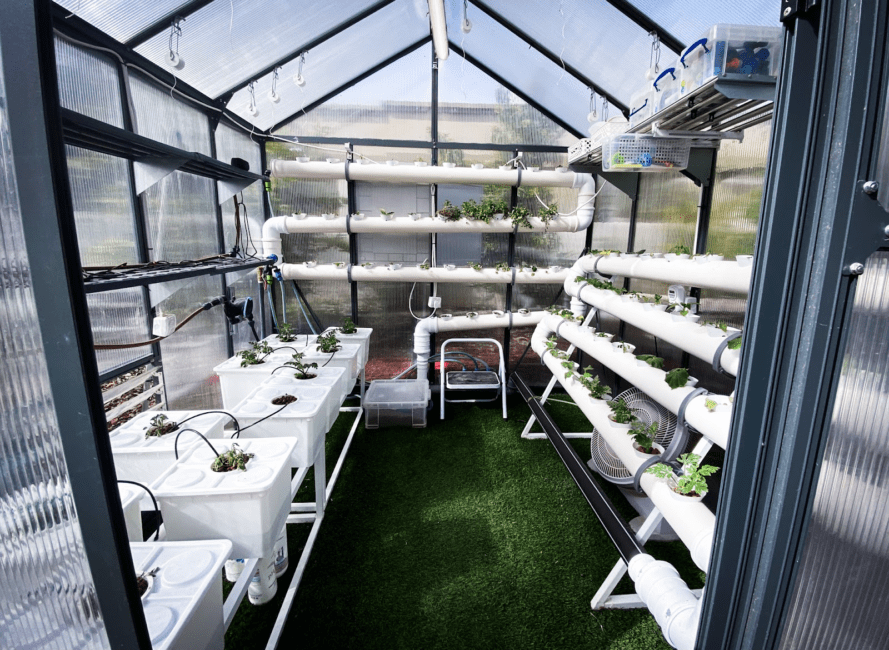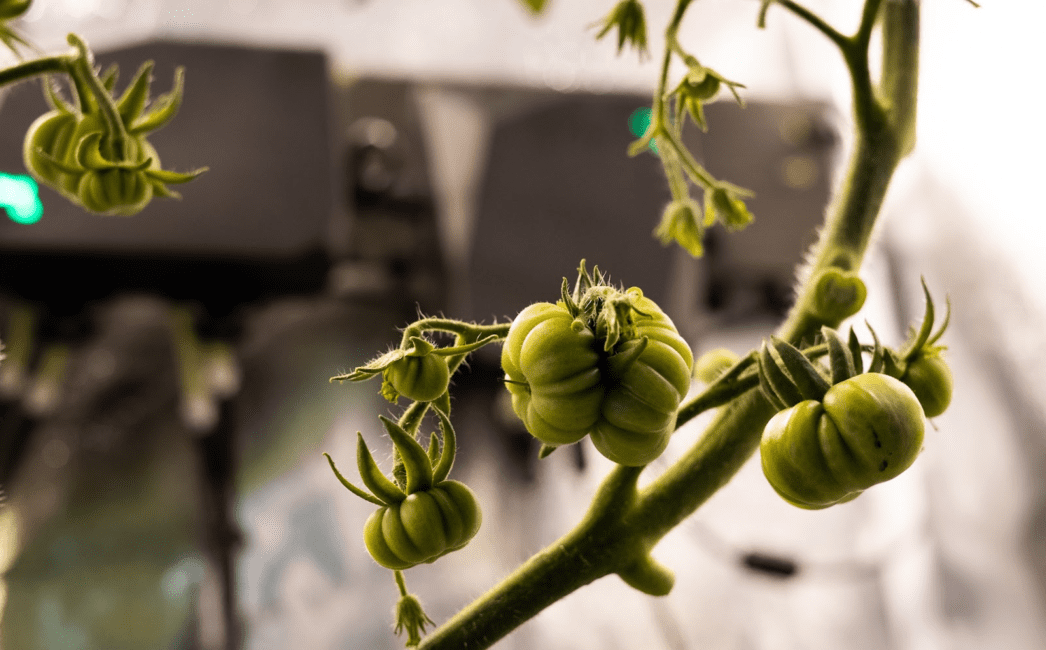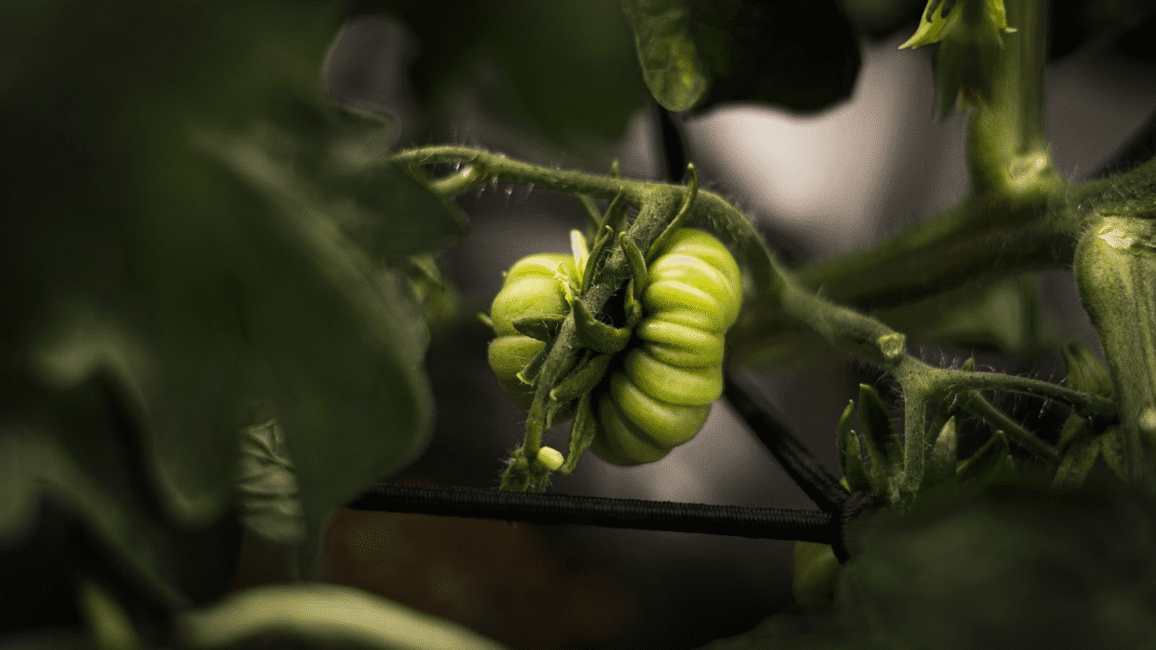This is a sponsored post…
Hydroponics systems are hailed for the various advantages that they afford both the casual and professional grower. Whether you’re growing tomatoes, cannabis, or anything in between, there are various advantages afforded to you by using a hydroponics system.
The issue here however is that there are different kinds of hydroponics systems, and choosing the right one for your needs is crucial to your overall success.
Not only do you need to know what the different types of hydroponic systems are, but also what their benefits and drawbacks are. Today, you’ll learn everything there is to know about how to choose the best automated hydroponic grow system.
Why You Need a Hydroponics System (Automated Hydroponics Advantages)

If you plan on growing your own herbs, berries, veggies, and even cannabis at home, then using a hydroponics system is recommended. Using a hydroponics system has many advantages over traditional soil-based cultivation methods, and this is especially the case if we are talking about an automated hydroponics system controlled by highly advanced software, including the following.
1. Faster Growth and Bigger Yields
Hydroponics systems generally allow for much faster growth rates and higher yields. This is true of all hydroponics systems when compared to soil-based growing. However, it is especially the case if we are talking about an automated system. An automated system allows you to precisely calculate and control the amount of nutrients being dispersed to your plants, therefore allowing for much better results.
2. More Efficient Use of Water and Nutrients
Another advantage that you get from using a hydroponics system, particularly an automated one, is that it allows for much better nutrient and water efficiency. If you have a manual system, you may be adding either too few or too many nutrients, which can also be the case for water.
You don’t want to waste nutrients or water, which is where an automated hydroponics control system comes into play. Remember, too much water and too many nutrients can drown your plants and cause other problems, while having too little water and nutrients can cause a whole host of issues as well.
3. Space Efficiency
Okay, so it’s no secret that hydroponic gardening is much more space efficient than soil-based gardening. However, what needs to be said here is that an automated hydroponics system is even more space efficient. A good automated system keeps everything compact and in one place, therefore allowing for easy organization.
4. Reduced Work and Maintenance
With non-automated hydroponics systems, there is a lot of work involved. Every day, you need to test for the EC and pH levels of your nutrient solution, as well as the temperature. You also need to continuously mix new nutrient solutions while testing them rigorously to ensure that you don’t kill your crops. It’s a lot of hard work, and it can consume hours of time each day. Just mixing the nutrients together consumes a great deal of time.
5. More Money Saved
Although purchasing an automated nutrient system for your hydroponics garden might seem like a big investment, the reality is that it will most likely help you save money in the long run. You’ll end up wasting less water and nutrients, and your plants will grow faster and bigger, ultimately resulting in you saving both time and money.
Read Also: Hydroponics Garden Complete Beginners Guide
Hydroponics System Types

Before you can start this soilless growing method at home, whether for cannabis or cilantro, you need to be aware that there are a few main types of hydroponics systems, each of which have their advantages and disadvantages. Let’s determine which of the three main types of hydroponics systems is best for your needs.
1. Deep Water Culture (DWC)
First, we have DWC or deep water culture hydroponics, one of the most common and popular types of hydroponics systems. Here, plants are suspended above and partially inside of a solution of water and nutrients, with the roots of the plants being constantly exposed to the nutrient solution. There is a reservoir that holds nutrients and water, along with air stones and pumps to help drive oxygen into the water.
Smaller deep water culture systems are fairly affordable and ideal for beginners, whereas larger systems designed for big plants will require a substantial investment. One of the biggest benefits of DWC is that it is highly scalable, which means that it’s easy to take it from 10 plants to 100.
Furthermore, this is a type of hydroponics system that is also particularly suited towards plants that grow really fast and love the water, with leafy greens being a prime example. Deep water culture is simple and efficient, and usually results in fast plant growth combined with high yields.
However, power outages can cause a problem, especially because without power, the roots of plants will be submerged in water that is not oxygenated, and that can quickly result in the death of your crop. DWC also requires very close and exact monitoring of the water temperature, which can at times make things difficult.
a. Why pH Control is Critical Especially in DWC Hydroponics
In Deep Water Culture (DWC) systems, plants with large root structures consume significant amounts of water, especially in later stages of the grow cycle. To keep nutrients balanced, you have to add and / or replace water often. These adjustments will cause fluctuations in water pH, so regular monitoring and balancing are crucial.
b. How to Control the Water pH in DWC Using a pH Meter
To manage pH levels effectively, growers traditionally use a manual pH meter. This process involves regularly testing the water and adjusting the pH by adding acid or alkaline solutions. While effective, this manual method requires consistent attention and adjustment to ensure the water remains within the ideal pH range for nutrient uptake.
c. Why You Should Use a pH Controller for DWC Hydroponics
Switching to an automatic pH controller is more efficient. pH Controllers continuously monitor the water’s pH and automatically adjust it, so you don’t have to worry about the water’s pH all the time. A pH controller can boost plant growth and health by providing a stable environment.
d. How the Growee WiFi Connected pH Controller Saves You Time and Money
The Growee pH controller is like having a smart friend for your plants, always keeping an eye on things to make sure they’re just right. Thanks to its WiFi connection, it’s at the top of its game in making pH management a breeze.
It does all the hard work for you by automatically adjusting the pH levels, which means you can spend less time worrying and more time enjoying the fruits (or buds) of your labor.
Plus, with the Growee app, you can check in and make changes from anywhere, making sure your plants are happy, healthy, and growing strong. It’s a game-changer for hydroponics, making it easier and more efficient than ever to keep your plants in tip-top shape
2. Nutrient Film Technique (NFT)
Next, we have NFT or nutrient film technique, a type of hydroponics system where there is a trench where a nutrient rich solution flows through. The plants are suspended above this trench or canal, with the nutrient-rich solution constantly flowing over the roots of the plants. This is a good method to choose because it allows the plant roots to get access to water and nutrients, while still being exposed to oxygen.
In terms of the cost, an NFT system is generally quite costly, more so than a small DWC setup. If you have a bit of experience with hydroponics, and you want to grow plants that have small root systems, then this is a great method to consider. A huge advantage of this hydroponics method is that it’s super efficient as far as water and nutrients are concerned, making it both friendly for your wallet and the world around you.
The downside with the nutrient film technique is that it requires constant and vigilant maintenance, particularly to ensure that nutrient channel solutions don’t become clogged or obstructed in any way. Furthermore, if there is a power outage and the water pumps fail, it can lead to plant roots drying out and dying.
3. Ebb and Flow
The third most popular type of hydroponics system is the ebb and flow system. This is a very unique system characterized by a system where a solution of water and nutrients is periodically filled into a chamber where the roots of the plants rest, which then drains back into a reservoir.
Many people prefer this method of hydroponics because it closely remembers the wet-dry cycles that plants would be exposed to in the wild. It’s great for allowing plants to take in water and nutrients with great efficiency.
Ebb and flow systems don’t cost all that much to set up, and they’re also ideal for total beginners and pros alike, not to mention that the ebb and flow system is ideal for smaller and larger plants alike. It also happens to be very efficient with water usage, more than both of the other methods discussed above.
However, timing is crucial, and if you don’t get the ebb and flow cycle right, you might either drown or dry out your crop, which is perhaps the biggest drawback of this hydroponics setup.
Read Also: What are the Benefits of Hydroponic Farming?
Pre-built Kits vs. DIY Systems
If you are thinking of going the DIY route and building your own hydroponics system from scratch, all the power to you, but it’s not easy. There are many reasons why pre-built hydroponics kits, complete with automated features, are so popular. Let’s find out why.
1. Convenience
The first difference is of course convenience. With the DIY route, you have to buy everything yourself, do some assembly, problem-solving, and more. Simply put, setting up your own hydroponics system can be incredibly time-consuming.
It’s just not very convenient if you have to spend days gathering materials, building, and more. However, with a pre-built kit, you get the reservoir, the medium, pumps, and everything in between. You don’t have to shop around, and most of it should already be assembled.
2. Time
Related to the above point, not only is it just much more convenient to get a pre-built hydroponics kit, but it’s also much more time-efficient. You can order and set up a pre-built kit within mere minutes, as opposed to going the DIY route, which will undoubtedly take much longer, and no one has that kind of time to waste!
3. Functionality
Pre-built kits complete with automated features tend to be much more functional and reliable than anything you might build on your own. These are professional components purchased from reputable retailers, and built by people who know what they are doing. In other words, these kits actually work. However, if you build your own DIY hydroponics system, it might break at any time, and it likely won’t function properly from the onset.
4. Durability
Related to the above point, not only can you rest assured that a pre-built kit will be more functional than anything you plaster together yourself, but also more durable. These are professional grade components built to last, as opposed to whatever second hand materials you might find lying around your home. A pre-built kit is built to last.
5. Support
If you buy a pre-built hydroponics kit, you get customer support. If something goes wrong, you get advice, and even better, your product is likely covered under warranty. If you go the DIY route, you get no such support.
6. Cost
One thing to keep in mind is that although it may seem cheaper to do it yourself, which may be true in the beginning, it’s not quite the case in the long run. Sure, you might save money using old scraps from around the house, but if you consider how much better plants grow in a professional system, the cost comparison goes out the window.
Imagine you build your own hydroponics system, just for something to go wrong and all your plants die. All of a sudden, spending a bit of extra cash on a professional setup doesn’t seem quite as expensive!
7. Getting it Right
Building your own DIY system, even if you build it right, it can still be difficult to get it to function properly, an issue that you just won’t have with a pre-built kit.
Read Also: The Advantages of Hydroponic Farming
6 Things To Consider Before Buying A Hydroponic System

There are some important considerations to keep in mind when choosing a hydroponic system for your needs, so let’s see what the most important ones are.
1. What Do You Want To Grow In Your Hydroponic Garden?
One of the factors to consider is that you want to grow in your hydroponics garden. As mentioned above, some setups are ideal for small plants, whereas others are fine for bigger plants. If you want a system that is ideal for small and large plants alike, the ebb and flow system is likely best for you.
2. What’s Your Budget?
Hydroponics systems can cost a good deal of money, but some are cheaper to build than others. If you want to save money, and you only want a small setup, the most cost-effective one to choose is deep water culture. That said, how expensive the setup in question is also depends on the size and where you purchase the materials.
3. How Much Space Do You Have For Your Hydroponic Garden?
The amount of space at your disposal plays a role here too. For instance, NFT can be quite space efficient if you are growing smaller crops, and it can be adopted for a vertical setup. If we are talking about DWC hydroponics , this is less space efficient.
Yes, it can be set up in such a way so that space is maximized, but setting up a DWC system vertically is not really possible. If you are looking for the most space efficient option possible, the ebb and flow technique stands out.
4. How Much Do You Want To Harvest From Your Hydroponic Garden?
If you are looking for big plants and big yields, then you need to choose a hydroponics system that can accommodate this. Generally speaking, deep water culture is fine for big plants, but ebb and flow is even better for accommodating large plants.
5. How Much Garden Time Do You Have?
You may also want to consider how much time you have per day to garden, as some hydroponics systems are less time intensive than others, with DWC being one of the best on this front. Of course, getting an automated nutrient mixing system will help save you a whole lot of time as well.
6. Automation Capabilities
Perhaps one of the most important considerations to keep in mind is what the automation capabilities of the hydroponics system in question are like. There are many systems out there that connect directly with applications that allow for remote monitoring and control, which is a huge bonus.
Furthermore, keeping the pH and EC levels optimal for plant growth can be challenging, but not when you have a fantastic automated nutrient delivery system like that from Growee! Some of the best ones out there may even allow for easy monetization.
Final Words
If you’re looking to create your own hydroponics system at home, we strongly recommend trying a pre-built kit. This will make life easier on many fronts. You may also want to consider investing some money into automation, as an automated hydroponics system can help save you a whole lot of time, money, and effort over the long run.
Read Also: Waste To Fertilizer: What You Need to Know
